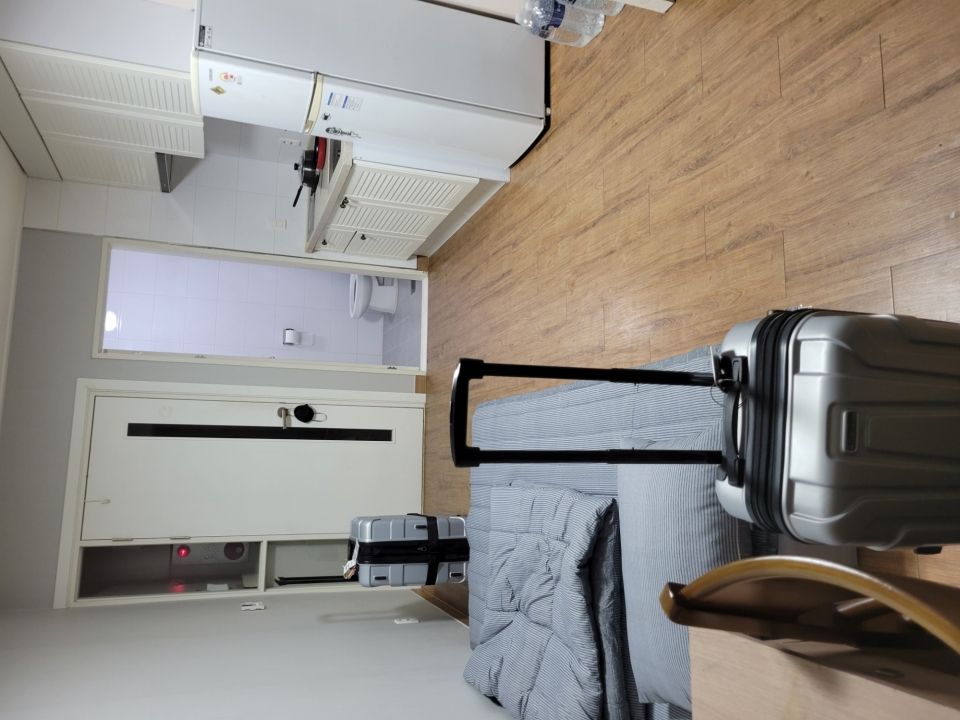Packing for South Korea
SO. You just accepted a job teaching English in South Korea...congratulations! If you are anything like me then right now you might be feeling stressed, and thinking to yourself, “What do I pack for a whole year?!”
Trust me, the last thing you want to do is haul over 100lbs of luggage, packed into multiple suitcases, through all the airports, checkpoints, train rides, and taxi rides that it will take for you to get from your home in the States to your new apartment in Korea.
Packing to leave your home for a year can be very stressful, without the added concern of wondering whether you are bringing the right stuff with you. CIEE will give you a pretty comprehensive list of what to bring, but below are my recommendations (along with the input of several foreign teachers from my school) for what you should bring from home. If it isn’t on this list, you can most likely buy it once you are in Korea.
Bring From Home:
1. 3-4 months of any medications, vitamins, and over the counter meds. You will be able to restock the majority of these items in Korea, but you don’t want to worry about making sure you have Claritin or Ibuprofen while you are still trying to figure out the lay of the land. To save space when packing, you can remove the items from their original bottles or boxes and put them into bags with labels. This is what I did before I arrived, and I had no trouble getting them through security or customs at the airports.
2. Personal Items. You will have access to all the same furniture and decor you would have in the States, so don’t worry about bringing anything to decorate your apartment unless it is something you can't live without. I would recommend pictures of friends and family, or posters of some things you like. There will be a lot of white space on the walls in your apartment, and the personal items will help it to feel a little more like home. Pictures and posters can both pack flat so they don’t take up much space in your suitcases. Personally, I brought an electronic photo frame to put on my desk. I uploaded a bunch of photos before I came, and my friends and family can send photos to the frame any time they want.

3. ADAPTERS. ADAPTERS. ADAPTERS. You can not have enough adapters. I would recommend having two types. A power strip adapter and a single adapter. A power strip adapter will give you the opportunity to plug multiple devices into the same adapter. This means you won’t have to have your laptop plugged in on one wall, your phone plugged in across the room, and your Kindle plugged in in the kitchen. Single adapters are great to take with you to your school or to a cafe if you want to do some work (like this blog ;) ). I leave my electric toothbrush permanently plugged into a single adapter in my bathroom. It’s nice not to have to charge it next to my bed and then have to take it back and forth from the bathroom to use it.
4. Towels. Yes they have towels here, but “medium” is about as big as you’re going to find. Most towels are the size of dishtowels. I would recommend bringing at least two regular bath towels with you. (That way you have one to use while the other one is being cleaned.)
5. Clothes/Shoes: The only shoes I would recommend bringing from home are some broken-in, comfortable walking shoes and any shoes you absolutely can’t live without. Everything else you will be able to buy in Korea. (If you have exceptionally large feet, you might have trouble buying shoes in person, but online stores in Korea have extra sizes available and and they will deliver to your door.) The same goes for clothes. Don’t weigh down your suitcase trying to bring your whole closet with you. Bring the essentials and buy the rest in Korea. The exception to this is plus sizes. Koreans have a very homogeneous society and so there are not a lot of size differences, person to person. I would say if you wear anything bigger than a medium, you might have trouble finding clothes that fit you in stores. But again, you can always shop online. My advice is this, whether you bring a lot of clothes from home or you make plans to buy clothes in Korea, make sure you have clothes that make you feel comfortable and confident. You WILL be stared at as a foreigner, so feeling strong and positive can make all the difference in your experience abroad.
6. Food for quarantine. There is no way around it, quarantine is going to be rough. You will NOT be allowed to leave your apartment. I found it really helped to have some comfort food from home packed in my suitcase. Even if you can figure out how to order food to your apartment, most of your options will be Korean food. Having some favorite foods from home will help ease the transition into a different culture.

7. Essential paperwork/pictures. CIEE will give you a pretty comprehensive list of paperwork to bring with you that covers everything you could really need in case of an emergency. The only thing I would add to their list is to bring MULTIPLE copies of the small, passport size photos. You will need at least one for your ARC card, and it never hurts to have backups in case the bank or the education department decides they want one too.
8. SIM card. Unlock your phone and order a Korean SIM card before you arrive in Korea. Don’t get stuck trying to order a SIM card to your apartment during quarantine.
9. Korean Cash - there will be times when your foreign credit card won't work, so having cash right away can be really helpful. With quaratine being the way it is right now, you won't be able to exchange any money at the airport either. So plan ahead and change money at your bank in the US before you arrive. Until your bank account is set up in Korea (which will take 6-8 weeks) you will have to rely solely on cash or your credit card, so bring enough cash to last.
10. KN94/KN95 masks. Cloth masks are not usually worn in South Korea. You can easily buy masks once you are here, but you will want to make sure you have enough to get through the first 2-3 weeks.
11. Enough toiletries to last 1 month. Don’t pack full size bottles! It will take up so much space. If you have have any specialty products you can't live without, you can decide whether to bring extra with you, or pay extra to have it shipped from the US. It's up to you.
Remember, South Korea is a first world country. Anything that is not listed above can be purchased once you arrive. Most of this list is focused on getting you through quarantine and the first 2-3 months of your time in Korea. During that time you will be focused on getting your ARC, opening a bank account, and completeing other essential tasks that need to be done soon after your arrival. The less you can stress about the small things like allergy medication or setting up your SIM card, the easier those first few months will be. Once you get out of quarantine you can ask the other foreign teachers at your school all about the best shopping places, both online and in person. They will help you to get set up with everything you will need to know!
If you have any more questions about what you should bring, feel free to contact me! I would be more than happy to help.
Related Posts
How to Go to the Doctor in South Korea as an English Teacher: A Guide to Healthcare and Health Insurance
As an English teacher in South Korea, maintaining good health is essential while living abroad. Navigating the healthcare system can seem daunting and stressful at first, especially if you can’t... keep reading
CIEE CHINGU – A Partner Program for Teachers in Korea
Chingu ( 친구 ) is the Korean word for friend . CIEE Chingu is a partner program included in CIEE’s Teach in South Korea programs! Our goal is to connect... keep reading
TWICE with CIEE: Kayleigh in Korea (PART 1)
Kayleigh is a CIEE alum who participated in CIEE's Teach in South Korea program AND CIEE’s Teach in Spain Volunteer program! CLICK HERE to read her experience in Spain. WHY... keep reading







